Alfred Daniell FRSE (1853-1937) was a Welsh-born British advocate, remembered for his contributions to Physics. His textbooks have been translated into most European languages, and other languages from Afrikaans to Japanese.
Contents

Alfred Daniell FRSE (1853-1937) was a Welsh-born British advocate, remembered for his contributions to Physics. His textbooks have been translated into most European languages, and other languages from Afrikaans to Japanese.

He was born in Llanelli in Wales the son of Mayler Daniell, an accountant in 1853. He studied at the University of Edinburgh graduating MA LLB in 1874. He received a BSc in 1878 and DSc in 1884. [1] He lectured in physics in medicine at the University of Edinburgh. He was called to the Scottish Bar as an advocate in 1886.
In 1885 he was elected a Fellow of the Royal Society of Edinburgh, his proposers being Alexander Crum Brown, William Lindsay Alexander, James Lorimer and Peter Guthrie Tait. [2] At this time he was living at 40 Gillespie Crescent, a modest flat in the south-west of Edinburgh. [3]
He moved to London in the late 1890s and became a Barrister of the Inner Temple in 1894, specialising in cases requiring scientific knowledge.
He died on 12 January 1937 at his lodgings at Viewforth Gardens in south-west Edinburgh. [4] A large collection of his papers are held by the University of Edinburgh.
Daniell never married and had no children.
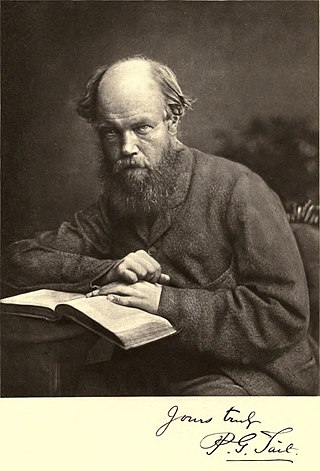
Peter Guthrie Tait was a Scottish mathematical physicist and early pioneer in thermodynamics. He is best known for the mathematical physics textbook Treatise on Natural Philosophy, which he co-wrote with Lord Kelvin, and his early investigations into knot theory.

Sir D'Arcy Wentworth Thompson CB FRS FRSE was a Scottish biologist, mathematician and classics scholar. He was a pioneer of mathematical and theoretical biology, travelled on expeditions to the Bering Strait and held the position of Professor of Natural History at University College, Dundee for 32 years, then at St Andrews for 31 years. He was elected a Fellow of the Royal Society, was knighted, and received the Darwin Medal and the Daniel Giraud Elliot Medal.
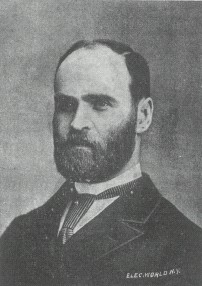
Alexander Macfarlane FRSE LLD was a Scottish logician, physicist, and mathematician.
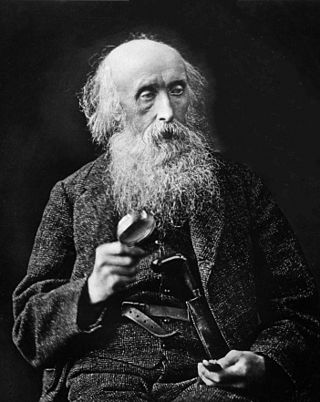
John Hutton Balfour was a Scottish botanist. Balfour became a Professor of Botany, first at the University of Glasgow in 1841, moving to the University of Edinburgh and also becoming the 7th Regius Keeper of the Royal Botanic Garden Edinburgh and Her Majesty's Botanist in 1845. He held these posts until his retirement in 1879. He was nicknamed Woody Fibre.

John Hughes Bennett PRCPE FRSE was an English physician, physiologist and pathologist. His main contribution to medicine has been the first description of leukemia as a blood disorder (1845). The first person to describe leukemia as an unknown disease was Alfred François Donné.
George Goudie Chisholm FRSE FRSGS LLD was a Scottish geographer. He authored the first English-language textbook on economic geography: Handbook on Commercial Geography (1889) and the World Gazetteer, later to become known as The Times Gazetteer.
Cargill Gilston Knott FRS, FRSE LLD was a Scottish physicist and mathematician who was a pioneer in seismological research. He spent his early career in Japan. He later became a Fellow of the Royal Society, Secretary of the Royal Society of Edinburgh, and President of the Scottish Meteorological Society.
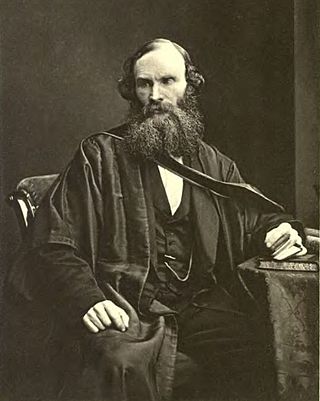
James Thomson FRS FRSE LLD was a British engineer and physicist, born in Belfast, and older brother of William Thomson.
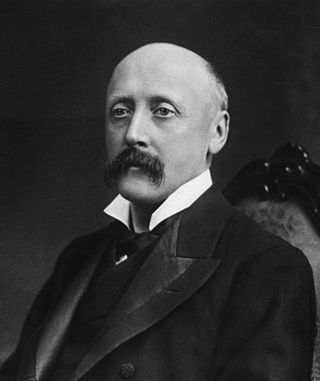
Sir Isaac Bayley Balfour, KBE, FRS, FRSE was a Scottish botanist. He was Regius Professor of Botany at the University of Glasgow from 1879 to 1885, Sherardian Professor of Botany at the University of Oxford from 1884 to 1888, and Professor of Botany at the University of Edinburgh from 1888 to 1922.

Alexander Smith was a Scottish chemist, who spent his working life teaching in the universities of America.

Sir Alexander Grant, 10th Baronet, FRSE was a British landowner and historian who served as Principal of the University of Edinburgh from 1868 to 1884. He had strong links to India, especially Bombay.
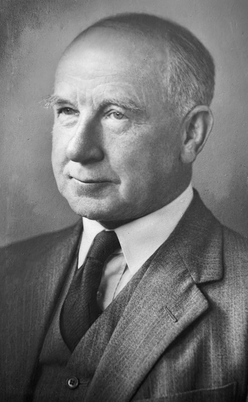
Sir Sydney Alfred Smith CBE OPR FRSE, was a forensic scientist, pathologist and one of the pre-eminent medico-legal specialists in the world. From 1928 to 1953, Smith was Regius Professor of Forensic Medicine at the University of Edinburgh, a well-known forensic department of that time. Smith's iconic 1959 autobiography Mostly Murder has run through many British and American editions and has been translated into several other languages.

Professor Alfred Joseph Clark MC FRS FRSE was a British pharmacologist and Professor of Pharmacology at the University College, London. He was a de-bunker of fraudulent remedies and did many early studies on the placebo effect of many claimed cures.

Dr Alexander Tweedie FRS was a Scottish physician and writer.

Edward Turner FRS FRSE FRCPE was a Jamaican-born, British physician and chemist, known for his work on atomic weights, and as a populariser of the atomic theory of Dalton. He was the author of a popular chemistry textbook that was the first to incorporate chemical symbols and formulae as well as organic chemistry.

Douglas James Guthrie was a Scottish medical doctor, otolaryngologist and historian of medicine.

Sir Byrom BramwellFRSEFRCPE was a British physician and medical author. He was a general physician, but became known for his work in neurology, diseases of the heart and blood, and disorders of the endocrine organs. He was president of the Royal College of Physicians of Edinburgh.
David White Finlay was a Scottish physician and yachtsman. He was Regius Professor of Medicine at Aberdeen University 1891 to 1912. He was Honorary Physician to the King in Scotland to both King Edward VII and King George V.

Alexander Murray Drennan FRSE FRCPE was a Scottish pathologist. In the First World War, he promoted the widespread use of Edinburgh University Solution.

Arthur Logan Turner FRCSEd FRSE LLD was a Scottish surgeon, who specialised in diseases of ear, nose and throat (ENT) and was one of the first surgeons to work at the purpose-built ENT Pavilion at the Royal Infirmary of Edinburgh. During his surgical career he published a series of clinical papers and wrote a textbook of ENT surgery which proved popular around the world and ran to several editions. After retiring from surgical practice he pursued his interest in the history of medicine writing a biography of his father and histories of the Royal Infirmary of Edinburgh and the University of Edinburgh. As his father had been before him, he was elected President of the Royal College of Surgeons of Edinburgh. His collection of pathological specimens was donated to Surgeon's Hall Museum in Edinburgh..